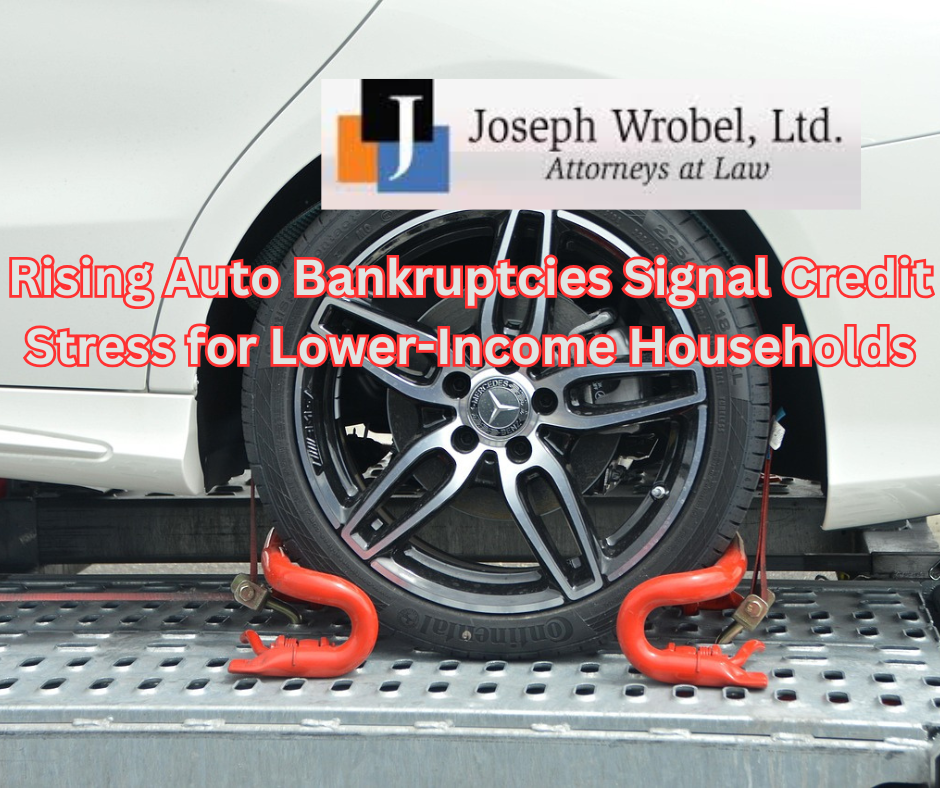Rising Bankruptcies Show Warning Signs in the Economy
Reports of major auto industry bankruptcies are capturing attention because they signal more than isolated business problems. They reveal growing stress across an economy where lower-income consumers are carrying heavy debt burdens. According to Reuters, a wave of filings from auto-related businesses suggests deeper trouble in credit markets tied to household borrowing. These developments come after years of elevated vehicle prices, expensive financing, and persistent inflation that continue to erode purchasing power for many working families.
When bankruptcy strikes companies that serve consumers living paycheck to paycheck, it can be an early indicator of broader economic weakness. As the auto sector depends heavily on credit availability, even small disruptions can ripple through the financial system. Lenders tighten their standards, interest rates rise, and buyers with limited credit histories find it increasingly difficult to qualify for financing. The latest auto bankruptcies show how these financial pressures are beginning to converge on lower-income Americans.
Examples From the Auto Industry
Two recent examples illustrate the scope of the problem. First Brands, a company that manufactures and distributes automotive parts, filed for bankruptcy after struggling to refinance its corporate debt. Market analysts point to high borrowing costs, falling investor confidence, and disruptions from tariffs as contributing factors. The company’s bankruptcy underscores how fragile supply chains can become when broader credit conditions deteriorate.
At the same time, Tricolor Holdings, a subprime auto lender focused on serving low-income and Hispanic borrowers, also filed for bankruptcy. Its collapse reflects the growing financial pressure on consumers who rely on high-interest loans to purchase vehicles. As defaults rise, lenders such as Tricolor face mounting losses that quickly make their business models unsustainable. These filings serve as a warning that what begins as corporate distress can soon translate into greater hardship for working families struggling to make ends meet.
Consumer Credit Is Tightening Nationwide
Across the United States, signs of tightening credit are becoming more visible. Auto loan interest rates have climbed to levels not seen in more than a decade, and delinquencies are rising fastest among borrowers with lower credit scores. When more consumers fall behind on payments, the effects are felt across the entire credit system. Asset-backed securities that bundle auto loans are trading with wider risk spreads, reflecting growing unease among investors about the likelihood of repayment.
Tight credit conditions also make it harder for consumers to recover once they fall behind. Lenders are less willing to negotiate extensions or refinancing, and new loans come with higher interest rates. For many households, this creates a cycle that can be difficult to break. A missed payment leads to repossession, which damages credit, making it even harder to secure future financing. These trends show that today’s auto bankruptcies are a symptom of a much larger financial strain affecting millions of Americans.
The Broader Impact on Lower-Income Households
For many working families, owning a car is essential for maintaining employment and family responsibilities. Losing access to reliable transportation can lead to missed work, loss of income, and increased reliance on high-interest credit cards or short-term loans. When vehicles are repossessed, the costs go beyond losing the car itself. Borrowers may still owe deficiencies on the loan, adding to already heavy debt loads.
This financial instability compounds over time and contributes to growing economic inequality. Higher-income households often have the means to weather temporary setbacks, while lower-income consumers do not. Once a family enters a cycle of late payments and damaged credit, recovery can take years. Auto bankruptcies, therefore, serve as a clear measure of how fragile financial stability has become for many people at the lower end of the income scale.
A Sign of Economic Inequality
The Federal Reserve’s efforts to control inflation through higher interest rates have slowed borrowing but also widened financial inequality. Consumers with savings or strong credit can absorb rate increases with little disruption. By contrast, families already living on the financial edge face limited access to credit and higher costs on every dollar borrowed. As a result, the divide between financially secure and struggling households continues to grow.
The uneven impact of rising rates is visible in data showing increasing delinquency rates among subprime borrowers. While national employment numbers remain relatively strong, wage growth has not kept pace with higher prices and loan costs. For households that must finance a car to commute or take care of family needs, this creates an unavoidable pressure point. Auto bankruptcies simply highlight the visible end of a problem that begins with systemic inequality and limited access to affordable credit.
What Consumers Should Do
When financial stress becomes overwhelming, many people hesitate to seek help, hoping their situation will improve on its own. Unfortunately, once missed payments begin to accumulate, options narrow quickly. The best course of action for those facing repossession or heavy debt is to consult a bankruptcy attorney early. An experienced attorney can evaluate whether Chapter 13 or Chapter 7 bankruptcy may help stabilize the situation.
Chapter 13 bankruptcy allows individuals to keep their vehicle while catching up on missed payments through a structured repayment plan. Chapter 7 bankruptcy may eliminate unsecured debts altogether, freeing up income to maintain essential expenses like car payments. Understanding these options before a repossession occurs is critical. Acting quickly often preserves both assets and peace of mind.
The Perspective of an Experienced Bankruptcy Attorney
Chicago bankruptcy attorney Joseph Wrobel has seen firsthand how rising credit costs and tighter lending conditions affect everyday consumers. He notes that by the time many clients seek help, their credit has already suffered significant damage. Early consultation, he advises, can prevent unnecessary losses and provide a clearer path forward. Bankruptcy law exists to give people a second chance, not to punish them for falling behind during difficult times.
Wrobel’s experience reflects a broader truth about consumer finance. Many individuals believe that bankruptcy is a last resort when, in fact, it is often the most effective way to regain financial stability. As lenders and creditors become less flexible, the legal protections available through bankruptcy provide a structured way to reorganize debts, preserve assets, and rebuild credit over time.
The Road Ahead
Economists are watching the auto credit market closely because it offers an early view of financial distress among lower-income households. Rising defaults and bankruptcies could signal more widespread instability in consumer lending if current trends continue. While policymakers debate the balance between inflation control and credit availability, the impact on ordinary families remains immediate and personal.
For consumers under financial strain, knowing when to act is essential. Seeking legal advice early can help prevent long-term financial damage and protect vital assets such as vehicles. As Joseph Wrobel often reminds his clients, bankruptcy is not the end of financial life but the beginning of a fresh start. The sooner individuals take action, the sooner they can rebuild confidence and stability in their financial future.
About Joseph Wrobel, Ltd.
Joseph Wrobel, Ltd. is a Chicago bankruptcy law firm helping individuals and families find relief from debt through Chapter 7 and Chapter 13 filings. With decades of experience, the firm provides practical, compassionate legal guidance tailored to each client’s financial situation. Learn more at www.ChicagoBankruptcy.com.

 Subscribe to CB on YouTube!
Subscribe to CB on YouTube!